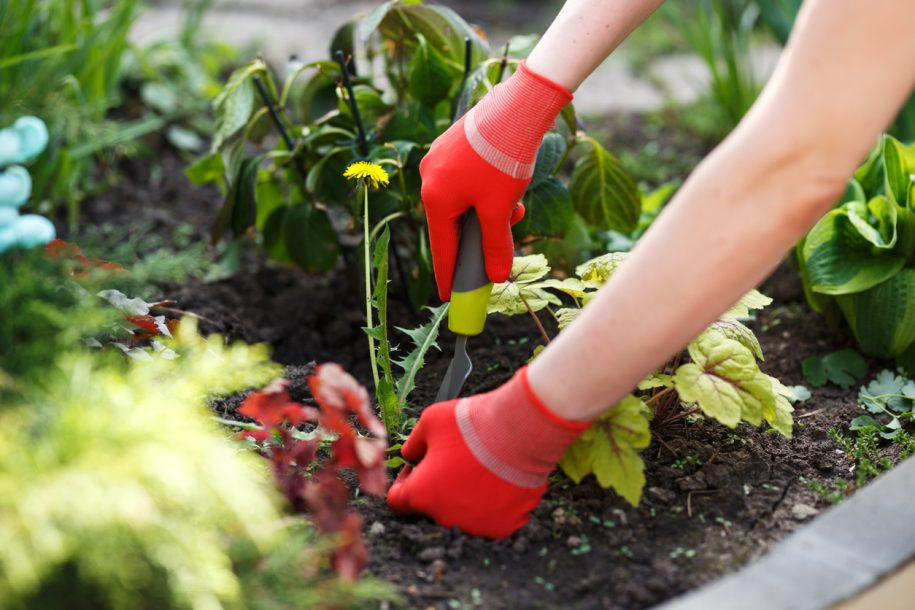Remove Weeds: Essential Garden Care Tips
Maintain a thriving garden by removing weeds in gardens with organic methods and effective weed management techniques. Keep your plants healthy and garden beautiful!
Why Removing Weeds is Important for Gardens
Gardening can be a therapeutic and rewarding hobby, but it comes with its fair share of challenges. One of the most persistent and frustrating issues for gardeners is dealing with weeds. Whether you’re a seasoned gardener or just starting, understanding the importance of removing weeds is crucial for maintaining a healthy and thriving garden. Let’s dive into why weed control is essential and explore some effective methods to keep your garden weed-free.
Weeds are not just an eyesore; they can have a significant negative impact on your garden. Here’s how:
Weeds compete with your plants for essential resources like water, sunlight, and nutrients. In many cases, weeds are more aggressive than your garden plants, which means they can quickly outgrow them and dominate the space. This competition can stunt the growth of your plants and reduce the yield of fruiting and flowering varieties. Furthermore, the presence of weeds can lead to a decline in soil quality over time, as they deplete the soil of its essential nutrients, making it harder for your plants to thrive.
Weeds often have deep and extensive root systems that allow them to access water and nutrients more efficiently than your garden plants. This gives them an unfair advantage, especially during dry spells when water is scarce. As a result, your plants may suffer from water stress, leading to wilting and poor growth. Additionally, weeds can create a dense canopy over your plants, blocking sunlight and further hindering their growth and development.
Weeds often serve as hosts for various pests and diseases that can spread to your garden plants. By allowing weeds to flourish, you’re inadvertently inviting these problems into your garden, which can lead to more significant issues down the line. Many pests, such as aphids and beetles, are attracted to weeds and use them as breeding grounds. Once these pests have established themselves, they can quickly move on to your garden plants, causing damage and spreading diseases.
Diseases such as powdery mildew and rust can also find a foothold in your garden through weeds. These diseases can spread rapidly, affecting the health and vigor of your plants. Furthermore, some weeds release allelopathic chemicals that can harm or inhibit the growth of your garden plants, adding another layer of complexity to weed management. Therefore, keeping weeds under control is essential to protect your plants from pests and diseases.
Let’s face it, weeds can ruin the aesthetic appeal of your garden. A well-maintained garden is not only pleasing to the eye but also reflects the care and effort you put into it. Keeping weeds at bay ensures your garden looks its best. Weeds can quickly transform a neat and tidy garden into a chaotic and unkempt space, detracting from the overall beauty and harmony of your outdoor area.
In addition to their unsightly appearance, weeds can also disrupt the visual balance of your garden by competing with your plants for space. This can lead to overcrowding and an uneven distribution of plants, making it difficult to achieve the desired garden design. By removing weeds, you can create a more harmonious and visually appealing garden that showcases the beauty of your plants. Moreover, a weed-free garden provides a sense of pride and accomplishment, enhancing your overall gardening experience.
Now that we understand the impact of weeds, let’s look at some effective methods for managing them.
One of the simplest and most effective ways to remove weeds is by hand pulling. This method works best when the soil is moist, making it easier to pull out the entire root system. Ensure you remove the whole root to prevent the weed from growing back. Hand pulling is particularly effective for small gardens or areas with minimal weed infestation, as it allows for precise removal of individual weeds.
When hand pulling weeds, it’s important to use the right technique to ensure complete removal. Grasp the weed firmly near the base and pull gently but steadily to avoid breaking the roots. For tougher weeds, consider using a weeding tool or fork to loosen the soil around the roots before pulling. Regular hand pulling sessions can help keep weeds in check and prevent them from establishing a strong presence in your garden.
Mulching is a fantastic way to suppress weed growth. By covering the soil with a layer of organic material like wood chips, straw, or grass clippings, you can block sunlight from reaching weed seeds, thereby preventing them from germinating. Mulching also helps retain soil moisture and improve soil health. In addition to its weed-suppressing benefits, mulch acts as an insulating layer, regulating soil temperature and protecting plant roots from extreme weather conditions.
When applying mulch, aim for a thickness of 2-4 inches to effectively block sunlight. Be careful not to pile mulch directly against the stems or trunks of your plants, as this can lead to rot and other issues. Over time, the organic material in the mulch will break down, enriching the soil and promoting healthy plant growth. By regularly replenishing the mulch layer, you can maintain a weed-free garden and enjoy the added benefits of improved soil quality and moisture retention.
For those who prefer natural solutions, there are several organic weed removal methods to consider.
Vinegar is a natural weed killer that works by drying out the leaves of the plants. Simply spray undiluted vinegar directly onto the weeds, taking care to avoid your garden plants. Be patient, as it may take a few applications to see results. Vinegar is most effective on young, actively growing weeds, and its acidity can disrupt the cellular structure of the plants, leading to their demise.
When using vinegar as a weed killer, it’s important to choose a sunny day for application, as the heat will enhance its effectiveness. Reapply as needed, especially after rain, to ensure thorough coverage. While vinegar is a safe and eco-friendly option, it may not be suitable for large-scale weed control, so consider using it in conjunction with other methods for best results.
Pouring boiling water over weeds is an inexpensive and effective way to kill them. The hot water scalds the plants, causing them to wilt and die. This method is particularly useful for weeds growing in cracks or between pavers. Boiling water is a non-toxic solution that poses no risk to the environment, making it an ideal choice for eco-conscious gardeners.
To use this method, carefully pour boiling water directly onto the weeds, ensuring complete coverage of the leaves and roots. Be cautious when handling hot water to avoid burns or accidents. This method is best suited for small, localized weed infestations, as it can be time-consuming for larger areas. By incorporating boiling water into your weed control routine, you can effectively manage weeds without relying on chemical herbicides.
If you’re looking for an alternative to chemical herbicides, there are several natural weed killers available.
Corn gluten meal is a natural pre-emergent herbicide that can prevent weed seeds from germinating. It’s safe to use around established plants and is an excellent option for organic gardeners. Corn gluten meal works by inhibiting root formation in germinating seeds, effectively stopping weeds before they can establish themselves.
To use corn gluten meal, apply it evenly across your garden beds early in the growing season, before weed seeds have a chance to germinate. Water the area lightly to activate the corn gluten meal and ensure maximum effectiveness. While it won’t kill existing weeds, it can significantly reduce the number of new weeds, making it a valuable tool in your weed management arsenal.
Salt can be used as a natural weed killer, but it should be used with caution. While effective, salt can also damage the soil and surrounding plants if not used carefully. Mix salt with water and apply it directly to the weeds, avoiding contact with your garden plants. Salt works by dehydrating the plants, leading to their eventual demise.
When using salt as a weed killer, target specific areas where weeds are particularly troublesome, such as pathways or driveways. Avoid using salt in garden beds, as it can linger in the soil and affect plant growth. By using salt sparingly and strategically, you can effectively manage weeds without causing harm to your garden’s ecosystem.
In addition to removal methods, implementing proactive weed management techniques can help keep your garden weed-free.
Consistent garden maintenance is key to preventing weeds from taking over. Schedule regular weeding sessions and inspect your garden frequently to catch any new growth early. By staying vigilant, you can address weed problems before they become overwhelming and ensure your garden remains healthy and productive.
Regular maintenance also involves monitoring the health of your plants and soil, as a thriving garden is less susceptible to weed invasions. Keep an eye out for signs of nutrient deficiencies or pest infestations, as these issues can weaken your plants and make them more vulnerable to weed competition. By addressing these problems promptly, you can create a more resilient garden environment.
Plant spacing is an often-overlooked aspect of weed management. By planting your garden plants closer together, you can reduce the space available for weeds to grow. This method also helps your plants form a natural canopy, shading the soil and further preventing weed growth. Proper spacing not only minimizes weed problems but also promotes healthier plant development by ensuring adequate air circulation and light penetration.
When planning your garden layout, consider the mature size of your plants and space them accordingly to avoid overcrowding. This will not only help with weed control but also reduce the risk of disease spread and improve overall garden aesthetics. By carefully considering plant spacing, you can create a more efficient and effective garden design that keeps weeds at bay.
Cover crops, such as clover or alfalfa, are plants grown primarily to benefit the soil rather than for harvest. They can help suppress weeds by outcompeting them for light and nutrients. Additionally, cover crops can improve soil fertility and structure, promoting a healthier garden environment. By incorporating cover crops into your gardening routine, you can create a more sustainable and resilient ecosystem.
Cover crops also provide additional benefits, such as reducing soil erosion, increasing organic matter, and enhancing biodiversity. When selecting cover crops, consider your specific garden needs and choose varieties that will complement your existing plants. By integrating cover crops into your garden, you can effectively manage weeds while reaping the rewards of improved soil health and plant growth.
Maintaining a weed-free garden is not only about aesthetics; it’s about creating a healthy environment for your plants to thrive. By removing weeds and implementing effective weed control methods, you can ensure your garden remains productive and beautiful.
Remember, the key to successful weed management lies in consistency and prevention. Regularly inspect your garden, utilize organic and natural weed removal techniques, and adopt proactive weed management strategies. By doing so, you’ll enjoy a lush, thriving garden that rewards your efforts with bountiful blooms and harvests. So roll up your sleeves and take control of those weeds for the best garden experience!


Leave a Reply
You must be logged in to post a comment.